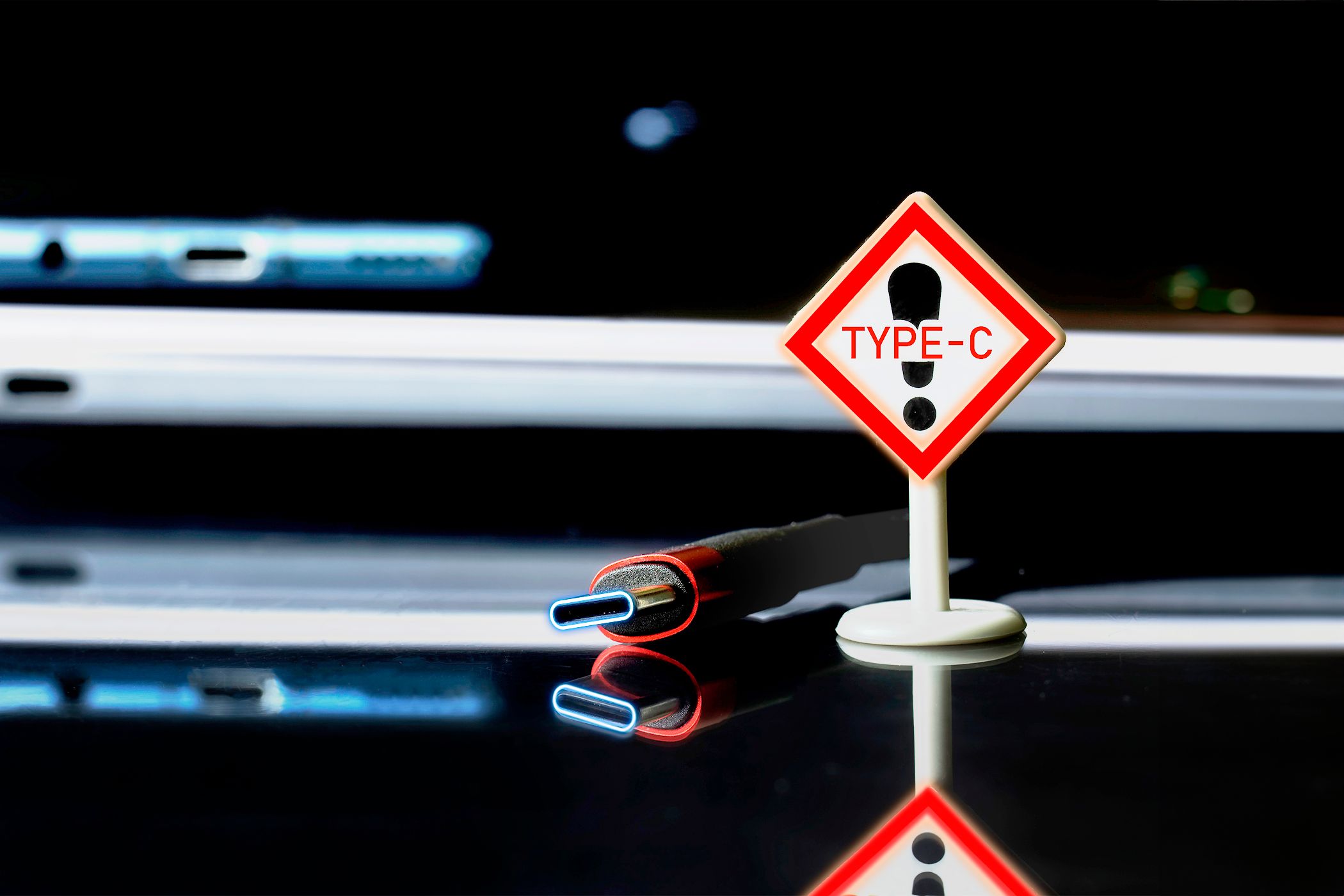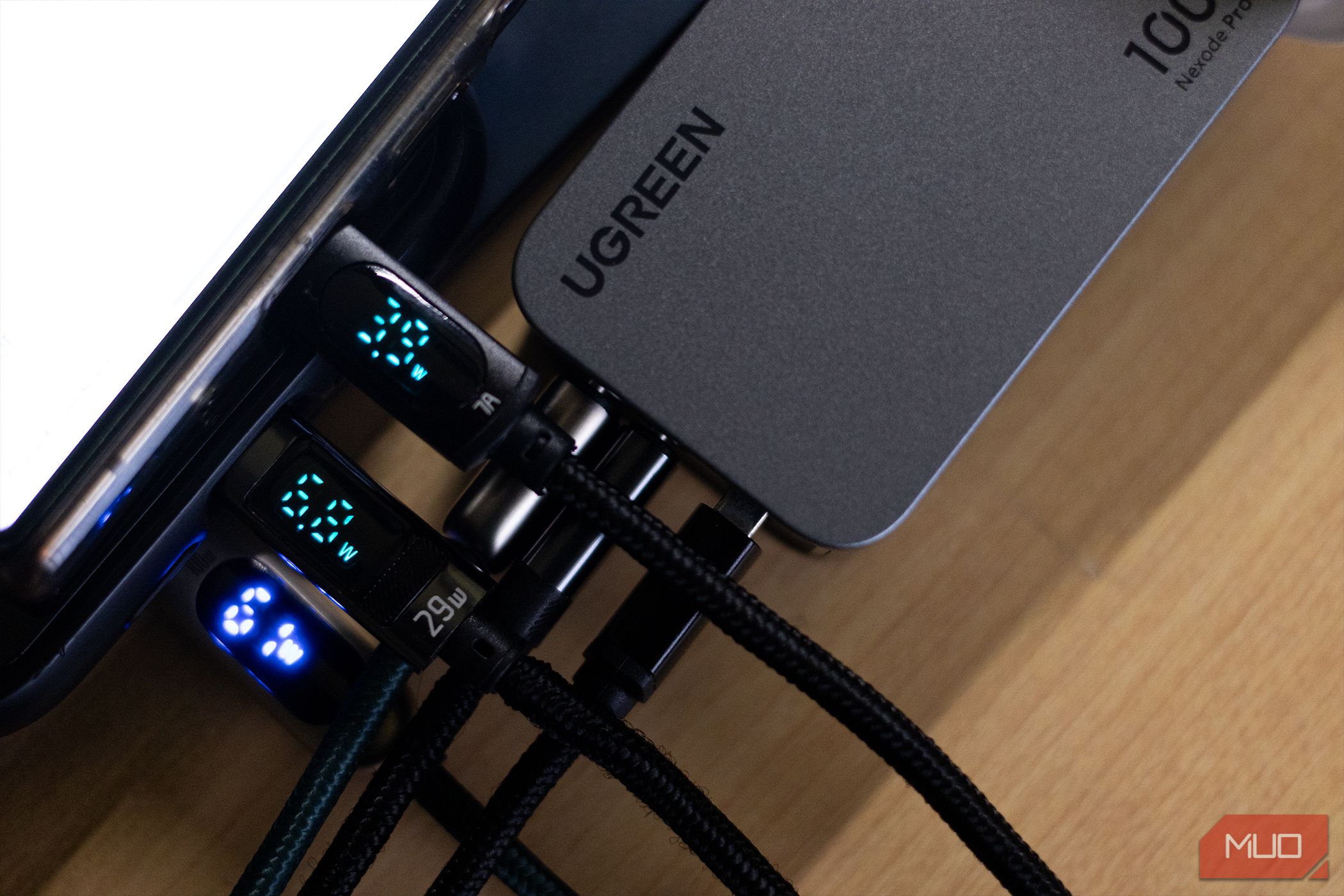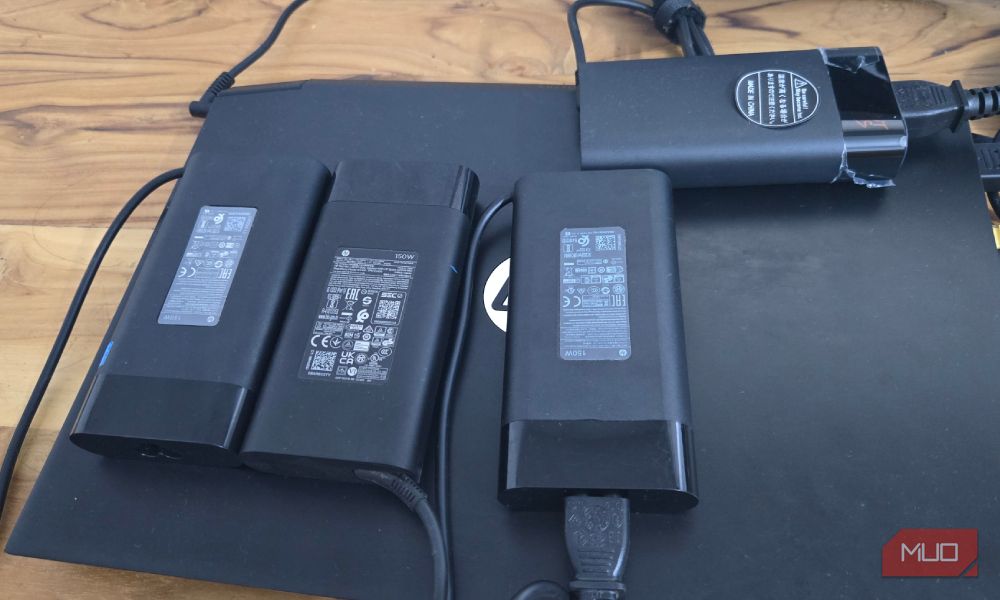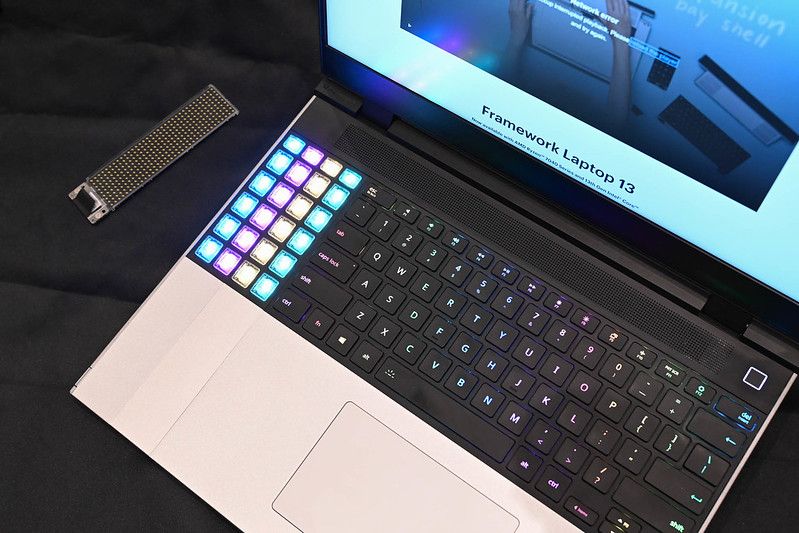Your laptop’s USB-C port placement matters more than you think. Having two USB-C ports that both support Power Delivery—one on each side—changes how you work, travel, and connect devices. Yet most manufacturers still cut corners on this essential feature.
4
Not All USB-C Ports Are Equal
While USB-C has plenty of benefits, not every USB-C port is created equal. Many laptops now come with multiple USB-C ports, but their capabilities can vary widely. Some can deliver up to 240W for fast charging, while others provide just 15W. Some ports handle only data, while others handle only power; many support both, albeit with varying speeds and specs. Data transfer can range from basic USB 2.0 to high-speed Thunderbolt 4, so it’s worth knowing exactly what each port is capable of.
To be clear, I’m advocating for laptops with two USB-C ports that both support full Power Delivery charging. Not one charging port and one data port. Not one full-powered port and one limited accessory port. Two equal ports, each capable of handling your laptop’s complete charging needs.
3
One Faulty Port Means a Dead Laptop
If your laptop has only one charging port, and it fails, the device becomes unusable. While USB-C ports are officially rated for a minimum of 10,000 insertion and removal cycles, they face more wear than traditional barrel chargers because they handle multiple functions—charging, displays, storage, and peripherals. Each insertion and removal stresses the connection, and that single port bears all of it.
Even when USB-C ports are repairable, doing so is expensive. Fixing them requires specialized equipment and expertise to desolder and replace the port, which is much more complex than repairing a traditional barrel jack. If the damage affects the motherboard’s traces or power delivery chips, you may end up needing a complete motherboard replacement at a much higher cost.
My $160 Charger Graveyard
I learned this firsthand with my HP Pavilion gaming laptop. The original 150W charger failed after two years. I thought I’d just buy a new one—except HP no longer sells it. Now I’m stuck with third-party replacements that only last about six months if I’m lucky. Four dead chargers later, my only options are to keep buying these flimsy replacements or spend more on a 200W charger, which the company could also stop selling at any time.
Four replacement chargers at $40 each equals $160 down the drain. That’s enough for two quality USB-C chargers that would power every device I own. If my laptop had dual USB-C charging ports, I could use any compatible high-wattage charger. Even if one port failed, I’d have a backup and wouldn’t need to rush to get it fixed.

Related
Don’t Buy a USB-C Laptop Charger Without Considering These 5 Things First
USB-C is incredibly useful, but it has some quirks to be aware of when it comes to laptop chargers.
2
Ports on Both Sides Make Life Easier
Having two USB-C ports is great, but where they’re placed matters just as much. When your laptop has charging ports on both sides, it makes life a lot easier. At your desk, you can plug in from whichever side is closer to the outlet, so you don’t have a cable running across your workspace. If you’re at a café or on a plane, you can use the side that reaches the plug best without stretching a cable over your lap or into someone else’s space.
This isn’t only about convenience; it also keeps your setup cleaner. You can charge on one side and plug in your mouse, keyboard, or hub on the other, so cables don’t get tangled up in one spot. It even helps your laptop ports last longer, because you’re not wearing out the same one over and over. If you rely on USB-C for charging, data, and accessories, having ports on both sides makes life simpler.
1
Why Laptop Makers Keep Cheaping Out on Ports
Manufacturers avoid putting USB-C ports on both sides for three main reasons: cost, design priorities, and profit.
First, adding a second full-powered USB-C port on the opposite side isn’t as simple as cutting another hole in the chassis. It requires redesigning the entire motherboard to properly route high-speed, high-power connections to both sides. It’s also necessary to duplicate expensive power delivery controllers and protection circuits, plus manage extra heat from components spread across the device. All of this adds complexity, engineering time, and cost.
Second, brands keep chasing ultra-thin designs at the expense of practicality. Every port needs space on the inside, not just the outside. Instead of balancing form and function, companies choose slimmer profiles over useful features because they know people will buy the sleekest laptop on the shelf, even if it means juggling dongles and dealing with awkward cable runs.
Third, extra ports are advertised as a premium feature. Basic models get stripped-down port layouts while even some premium lines hold back obvious features like dual-sided USB-C. If you want more than one USB-C port that supports charging, you’re pushed into buying the $2,000 Pro version. It’s deliberate, and it works—people pay more for features that should already be standard.
One of the reasons to love Framework’s modular laptop is that it nails what everyone else gets wrong about ports. A tiny company figured out how to put USB-C on both sides with swappable modules, while tech giants with billion-dollar R&D budgets claim it’s too complex to add the much-needed flexibility. The modular approach costs more, sure, but it exposes the big brands’ excuses for what they are: laziness dressed up as engineering constraints.
The Environmental Cost
There is an environmental cost associated with all this corner-cutting. Those piles of proprietary chargers ending up in landfills could be replaced by universal USB-C chargers that work with all your devices. One charger for your laptop, tablet, phone, and accessories — that’s the promise of USB-C. However, it will only be effective if manufacturers stop holding back.
Two Power Delivery ports, one on each side, should be standard on every modern laptop. We need backup options for critical charging and flexibility to adapt to any workspace. When you’re shopping for your next laptop, check that both USB-C ports, not just one, can handle full Power Delivery. It’s a simple feature that makes everyday use much easier.
In an age where we can fit supercomputers in our pockets, asking for two identical charging ports shouldn’t be seen as a big innovation, but common sense.








:max_bytes(150000):strip_icc()/command-prompts-57ed85a03df78c690fdd85eb.png?w=1174&resize=1174,862&ssl=1)
Leave a Comment
Your email address will not be published. Required fields are marked *